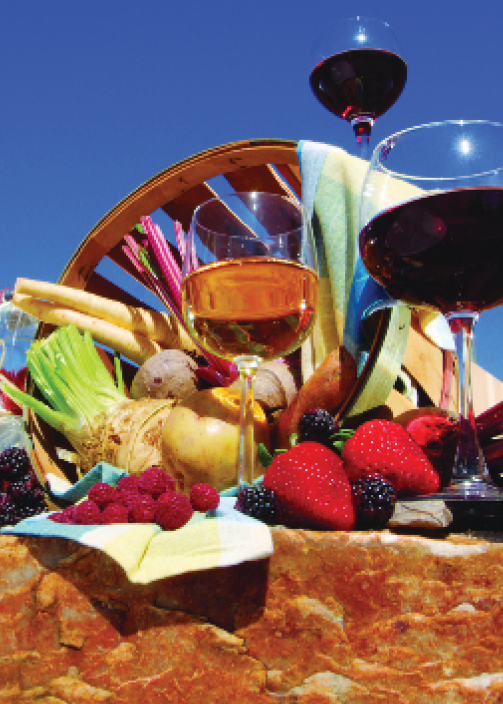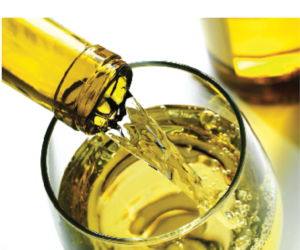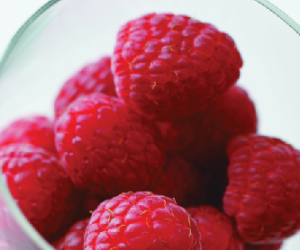
Wine is a dynamic chemical soup, constantly changing, evolving, reducing and oxidizing. From the moment it is made, its fate is sealed. Yes, it will improve, mature, reach a peak, and then it will decline and eventually become undrinkable. The best we can do is make it in such a way that it ages gradually, reaches that peak when we expect it to and declines slowly. It can be done, but in both grape and non-grape wines it is not an everyday occurrence.
Noted wine authority Jancis Robinson estimates that only 1% of all wines can improve for a decade, and here she was speaking of grape wines. While the percentage of non-grape or country wines with decennial potential is undoubtedly smaller than for grape wines, there is still a great variability in the aging potential of country wines. Some can indeed age well.
In both grape and country wines, there are several key contributors to a wine’s potential to age well. We will examine these below. They establish the necessary chemistry or conditions to fuel the long haul.
When the chemistry in the wine is right and the winemaker has exercised care in his craft, a pomegranate, blackberry, rose hip, huckleberry, raspberry, aronia berry, bilberry, elderberry, or even apricot wine can be enjoyed on its sixth, seventh or eighth birthday and some will improve for 10 years and beyond. I have recently enjoyed 14-year old fig, 18-year old cherry blend and 31-year old elderberry wines.
Root wines such as carrot, parsnip and beet are notorious for requiring three to five years to mature and most may then be enjoyed another three to five years. These numbers may not compare well with legendary grape vintages from Burgundy, Bordeaux or Douro, but legendary vintages are by definition rare. Still, the possibility alone should encourage home winemakers to buy better quality corks.
It’s Chemistry
It is difficult to appreciate the complexity of wine until one studies its chemistry. Ordinary wine is a complex symphony in which between 800 and 1,000 volatile compounds interact in a slow but continuous process of change. If you chemically inventoried any wine today and then mapped it again in a month, it would be a slightly different wine. Wine ages through a slow but constant chain of reactions such as esterification, reduction and oxidation. Whole books are dedicated to understanding these reactions and it is difficult to write about aging wines without writing a dissertation on organic chemistry. We shall try to resist the temptation at the risk of leaving out much.
However, it is no more necessary to understand chemistry in order to make wine than it is to understand botany in order to grow a garden or preserve its produce. However, in each case the better one understands the underlying science the more control one can exert over the endeavor. We only mention chemistry here because it is omnipresent in wine whether we acknowledge it or not.
A wine’s chemistry is derived from four sources. These are its base (the fruit, berry, flower, root, etc.), additives, fermentation and aging. As in grape wines, country wines too owe their quality to the potential delivered at harvest and supplemented by the winemaker. Fermentation management ensures that the yeast do their job efficiently and, for the most part, anaerobically. Aging is where
the evolution occurs, hopefully slowly. But aging potential is determined by the preceding factors.
It goes without saying that inferior fruit makes inferior wines. But when we think of inferior or superior fruit, we must think of it in terms of wine, not the table. Just as certain varieties of apple, for example, are superior for eating fresh but inferior for pie, cider or wine, the inverse is equally true. Knowing the potential of the base is required to start out on the right foot. Equally important is knowing when to harvest for best vinification, whether a particular fruit should be fermented with or without its skin, with or without its seeds, whether bruised, crushed or chopped. Given the wide variety of fruits available, this is largely a matter of experience, but some homework on your recipe can help you select wisely.
All wine bases bring a certain inherent chemistry to the must. Fruit and berries have more varied and complete chemistries than flowers, barks, seeds, roots and leaves, so for the latter we must add what is missing. The essentials are sugars, acids, phenolics and nutrients. In most cases we can supply enough to coax the yeast into making a good wine, perhaps even a great wine. With few exceptions, musts with naturally incomplete chemistries are those that experience has shown do not age well beyond their second or third year. As wonderful as they are, dandelion, hibiscus, ginger, sassafras, mint, nettle, carob, vanilla bean and similar wines must be enjoyed before their third year or not at all.
Key Contributors to Aging
We stated previously that there are several key contributors to how well a wine will age. We begin with the four contributors to wine balance — sugars, acids, tannins and alcohols. Equally important are a healthy fermentation, an adequate presence of sulfur dioxide and the management of oxygen exposure from start to finish. Finally, such incidentals as the closure and cellar conditions enter the picture. Since wines lacking balance collapse, we begin our examination with the four pillars of balance.
Sugars
The first pillar of balance is sugar. It is essential for the creation of alcohol and that which is not metabolized by yeast is residual and holds the wine up against bone dryness. If you want a wine to age, it must have some residual sugar to “raise the wine” from bone dryness and achieve balance. The difference between a finished specific gravity of 0.988 and 0.994 is significant.
The naturally important sugars in fruit and berries are sucrose and its component sugars, fructose and glucose. Fructose and glucose are reducing sugars — sugars that can form an aldehyde group in solution and be a reducing agent. In other words, they can donate an electron to other molecules. Up to a dozen additional sugars may be found in trace amounts in fruit and berries. They are not important to fermentation but contribute slightly to residual sweetness and the aging process.
Off-dry and sweet are entirely different animals. Sweet wines rarely maintain whatever balance they enjoyed at bottling after two years have passed. As acids mellow and tannins soften with time, the sweetness remains. If it dominates, the wine’s balance will certainly collapse. An overly acidic and tannic wine at bottling can withstand aging without exposing the sugar, but getting it just right so as to achieve balance several years in the future can be a matter of luck.
One can, however, build up a body of experience with boldly acidic and tannic sweet wine to fairly accurately predict when the wine will peak in balance. For the rest of us, it is easier to ensure the balance of an off-dry wine, where residual sugar counters young tannins and acid without making such a statement that it will necessarily stand naked later when the acids and tannins lose their virility. This is generally true of grape and non-grape wines.
Acids
Acids in wines contribute to their tartness and are the second pillar of balance. They also have a preserving effect. Think of the many foods that can be preserved by pickling, either in an acetic acid (vinegar) brine or a salt brine in which Lactobacillus bacteria ferments to create lactic acid. The point here is not really about pickling with acetic or lactic acid, but rather that acid promotes preservation. Low acid wines will not age well.
The most important organic acids in fruit are malic and citric; tartaric acid is mostly found in grapes, bananas and tamarinds, but is an important acid for lowering pH and therefore is universally found in acid blends for winemaking use. Two dozen other organic acids may be found in fruit in trace amounts.
Of all the trace acids, lactic is the most desired and is easily raised in prominence through malolactic fermentation to create a rounder, more buttery mouthfeel while reducing harsher malic acid. It can, however, be overdone.
Almost all acidity we taste is titratable acidity (TA), but it is the pH of the acid, aside from any taste component, that contributes to a wine’s color, stability and ability to withstand spoilage bacteria. A lower pH also increases the antiseptic properties of sulfur dioxide (SO2). Wines above a pH of 3.6 are at risk of bacterial spoilage.
Tannins and Other Phenols
There are several hundred phenolic compounds that might be present in wine. These largely affect its color, taste and mouthfeel and they evolve over time. These phenols span several classifications but the most important for our purposes are the tannins, with anthocyanins (pigments) a close second. Indeed, tannins are the third pillar of balance.
Most if not all phenols play a vital role in maintaining the health of the plants from which they are extracted. The various tannins are anti-oxidants, protect young wines from spoilage and promote preservation. Strong, somewhat harsh tannins contribute directly to the aging potential of wine, while growing softer as the wine matures. Over time, the tannins polymerize into larger and larger molecules. Dark fruit and berries bring more natural phenolic compounds to the wine, both as anthocyanins and — as the wine ages — anthocyanin-tannin polymers. Anthocyanins react with tannin polymers and more anthocyanins lead to finer, softer tannins in the aged wine. Bases deficient in tannins can be easily supplemented with powdered or liquid grape tannin. Pigments can also be added.
Alcohol
Alcohol is not present in the initial must, but the yeast correct that omission and create the fourth pillar of balance. Like sugars, acids and tannins, alcohols too assist in the preservation of the wine. Alcohol can be challenging, with so many yeasts today capable of producing wine with 14–16% alcohol by volume (ABV). In truth, wines above 13.5% ABV become problematic over time if the wine’s fruitiness does not survive the aging. When the fruit declines, the alcohol will lose its slight sweetness and stand hot to the taste. An ABV of 12–12.5% is sufficient for dark fruit and berry wines that are meant to be aged, while 10–11.5% ABV is sufficient for light fruit, berry, flower and herbal bases.
Healthy Fermentation
Selecting the right yeast for the right base is essential. Many manufacturers publish fact sheets on their various yeast offerings which are available online and set out the nutrient requirements and sulfur dioxide, temperature and pH tolerances. Use this information to ensure your yeast produce a healthy fermentation. Pay particular attention to yeasts requiring more than usual nitrogen and follow the manufacturer’s recommendations.
But also look at strains that extract or fix color, metabolize malic acid, tolerate aseptic SO2 doses, produce desirable esters or polysaccharides, or are compatible with malolactic fermentation. The yeast make the wine. Be sure to use them wisely.
Sulfur Dioxide
The winemaker should, foremost, promote the health of desirable yeast while simultaneously controlling the growth of undesirable yeast and spoilage bacteria. Maintaining an appropriate aseptic dose of sulfur dioxide (SO2) — sodium or potassium metabisulfite powder (including Campden tablets) — will do more to accomplish both than any other single thing the winemaker can do.
Further, SO2 can protect the color, flavor and aroma of the wine, establish resistance to bacterial attack during storage, and assure the soundness of the wine as it enters the bottle.
More than one “sulfite free” malic wine (blackberry, black cherry, chokecherry, plum, serviceberry) has been ruined by spontaneous malolactic fermentation in the bottle when either a lower pH or a little sulfite would have killed the responsible bacteria.
Managing Oxygen Exposure
The fate of wines free from disorders is eventual oxidation. Wine absorbs oxygen quite quickly every chance it gets. An oxygenated must is initially required to enable rapid growth of the yeast culture and some yeasts require a second oxygen dose to complete fermentation. Oxygen exposure is a double edged sword, required for reduction, but also for oxidation. (Read more about oxygen on page 61 of this issue.) Prudence says to minimize risk by minimizing oxygen exposure. The usual methods are sulfur dioxide treatment, carbon dioxide blanketing and atmospheric displacement with an inert gas such as argon.
Every time the airlock is removed from the fermenter, the wine is at risk to oxygen exposure. Rapid emplacement of a CO2 or inert gas barrier, minimizing splashing and maintaining the SO2 dosage are good practices any home winemaker can adopt without great expense. Racking into a CO2 or argon-filled carboy and employing these gases during bottling may make the difference between a raspberry wine that peaks in two years or one that gracefully ages for a decade or more.
Closures
Corks breathe very slowly, but they breathe. A long cork breathes more slowly, letting in less air (and oxygen) than a short one. Agglomerated cork closures are poor choices for long storage. The rate at which oxygen passes through a high quality, 1.75-inch (4.4-cm) natural cork is so slow that the greater danger is in the cork drying out and failing through contraction. Yet studies in Australia have shown that wines age much slower under a screwcap closure than they do under natural cork. On average, they age quickest under synthetic cork substitutes, because with synthetic corks, air reaches the wine by passing between the glass sides of the bottle and the cork.
One cannot stress the importance of storing the wine in contact with its closure if natural cork. In 1985, a buyer paid more than $200,000 for a bottle of 1787 Chateau Lafitte claret engraved with the initials of Thomas Jefferson.
He displayed the bottle standing up. When the cork dried out about a year later, the wine quickly became the most expensive vinegar in history. Lay the wine down!
Cellar Conditions
Wine ages most slowly and gracefully in dark coolness. If sealed with natural cork, a higher humidity will prevent the cork from drying out. Visible light is much less harmful to wine than the ultraviolet portion of the spectrum, but both are capable of causing free radical formation and hastened oxidation. Age the wine in dark glass, in a dark cellar.
As should be obvious by now, bottle aging of wine is a result of many chemical changes occurring over time. Each reaction occurs at a certain speed largely dependent on overcoming specific natural energy barriers. It has been found that 55 °F (13 °C) is the ideal temperature for cellaring wine. Below that hinders its development. Above that hastens it. A wine stored at 60 °F (16 °C) will age 20–50% faster than one stored at 55 °F (13 °C), while a wine stored at 73 °F (23 °C) will age 2–8 times faster.
Conclusions
Since all balanced wines will contain sugars, acids, tannins and alcohols, it should be obvious that their mere presence is no guarantee of a wine’s aging ability. Acids, tannins and alcohols interact continuously and fuel the formation of other molecules as the wine ages.
Country wines tend to exhibit less aging potential than grape wines, but a well-made, properly-balanced country wine may be age-worthy when certain conditions are met.
Most fruits do not have the whole set of components needed for a balanced wine, as grapes (optimally) do — sugar, acid, tannins, etc. — but what a must lacks can usually be added. Wines made from dark fruit and berries naturally possess greater aging potential.
A small amount of residual sugar is required to possess aging potential, but not so much as to make a statement when the wine ages. An off-dry wine should age better than a bone dry wine.
A pH of 3.6 or lower is likewise required for biological stability with the acidity (TA) sufficient to achieve a solid sensory balance. Lower pH is better.
Tannins and other phenolic compounds affect a wine’s color, taste and mouthfeel. Tannins can evolve as a wine ages. Under the right conditions, harsh, youthful tannins form longer molecular chains with age that precipitate out of solution and leave a pleasing softness in their wake.
Most country wines do not favor high alcohol content (over 13.5% ABV). Wines over this level may taste increasingly “hot” as they age. Experiment, take notes and heed the lessons learned.
Select your yeast wisely to suit the base and style of wine you desire. Learn and attend to their nutritional and environmental needs.
Sulfur dioxide (SO2) does more to ensure a wine’s aging potential than
any other single ingredient. Very few people genuinely react adversely to acceptable levels of sulfites. Shun it at your wine’s peril.
All wines, if not consumed, succumb to oxidation. Invest in oxygen exposure management. The investment is in time, practice and possibly a small tank of CO2 or other inert gas, with argon the favorite.
Long corks are preferred over short ones for aging. Agglomerated cork closures are poor choices for long storage. Store the wine on its side to maintain uninterrupted wine-cork contact.
If possible, store the wine in the dark at 55 °F (13 °C). Natural corks perform better and longer as long as the bottles are lying down and there is some humidity in the cellar environment.
Following all of the guidelines I provided in this article does not ensure that a country wine will be ageworthy. However, ignoring the guidelines will ensure that the wine will not be ageworthy, so don’t neglet my advice. When you open a bottle and find heaven, drink it slowly.






